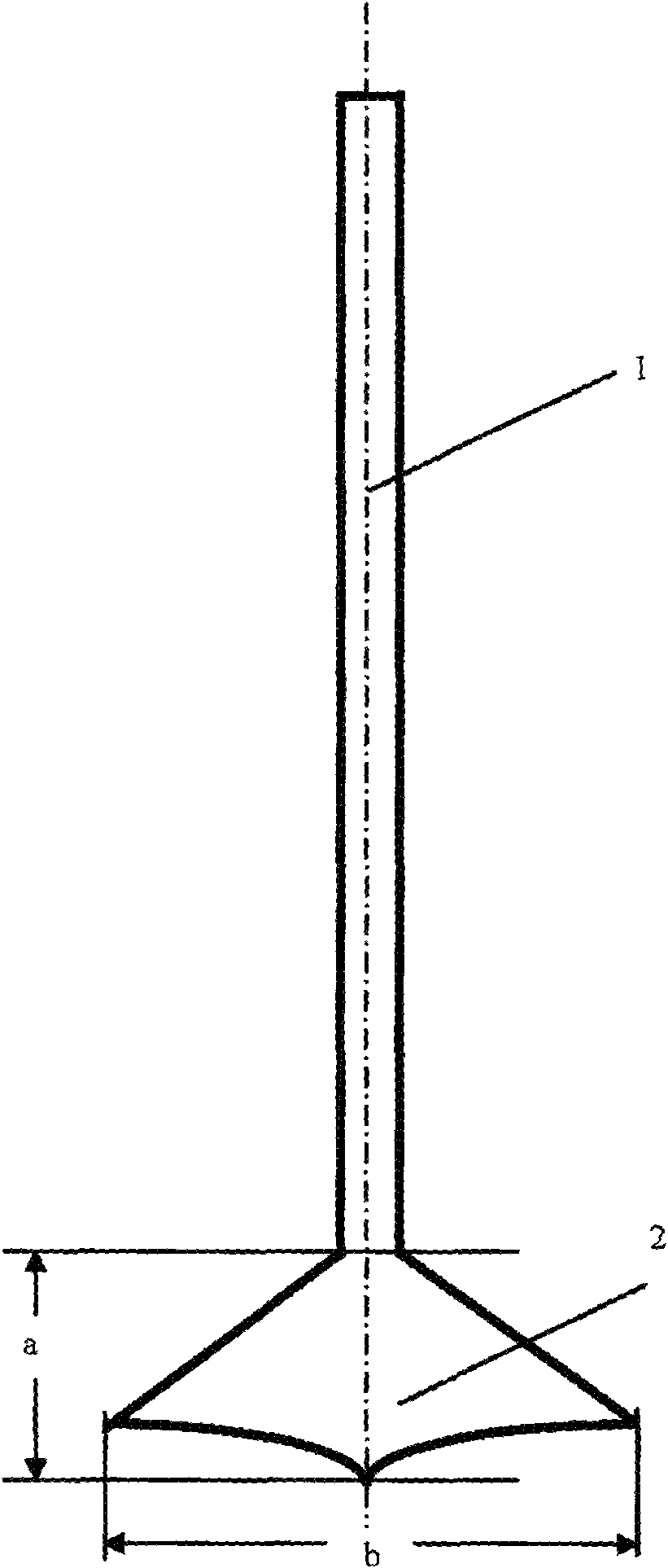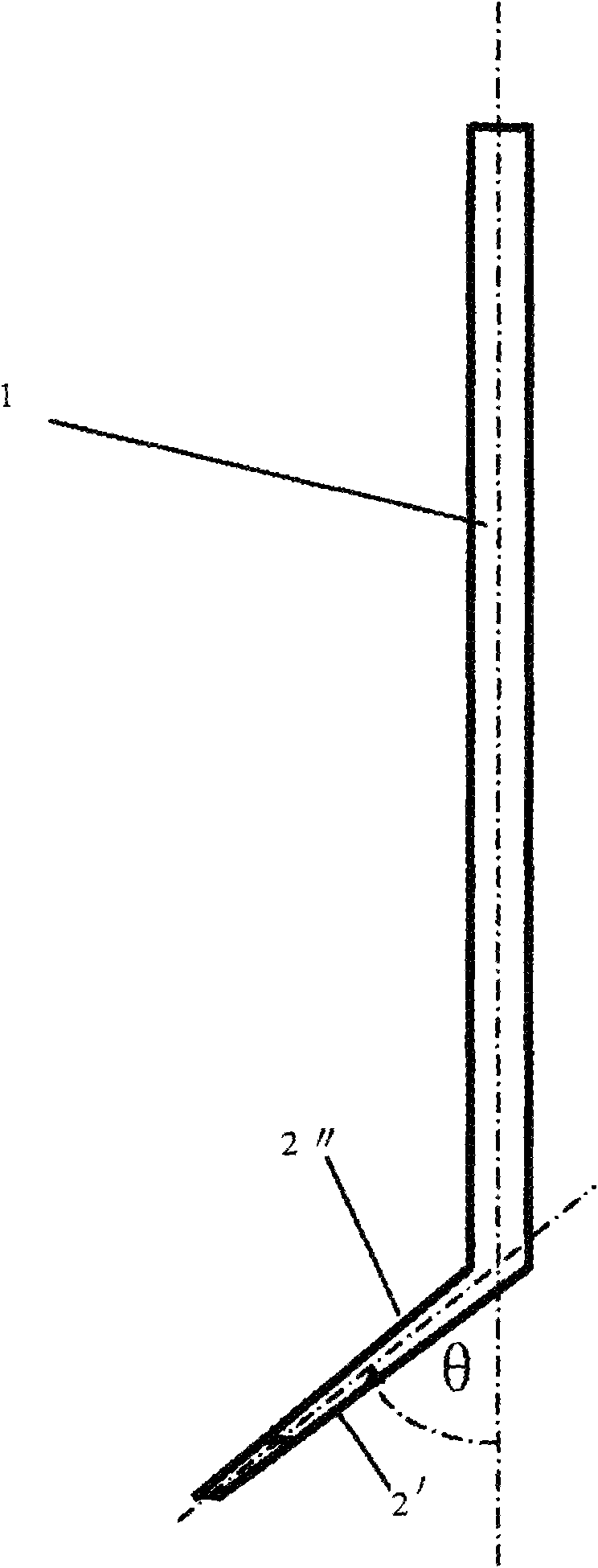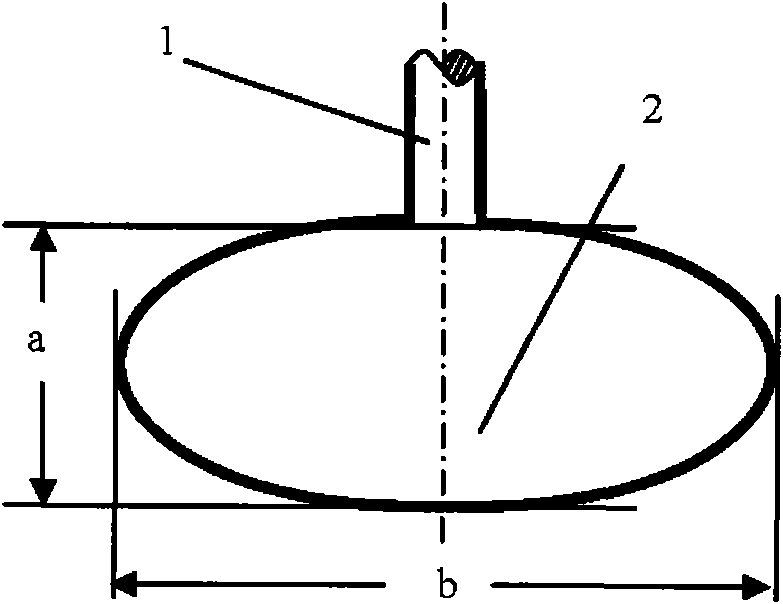Canoeing oar
A technology of paddles and blades, applied in the field of rowing paddles, can solve the problems of sinking of the hull, increase of additional resistance, slow forward speed, etc., and achieve the effects of reducing additional resistance, increasing speed, and improving competition performance.
- Summary
- Abstract
- Description
- Claims
- Application Information
AI Technical Summary
Problems solved by technology
Method used
Image
Examples
Embodiment Construction
[0019] Figure 1a and Figure 1b Shown is a first embodiment of the rowing paddle of the present invention. in Figure 1a For the front schematic view, the rowing paddle includes two parts, the paddle 1 and the paddle 2, wherein the paddle 2 has a paddle facing water surface 2' and a paddle backwater surface 2 ". The paddle 2 is located at the end of one end of the paddle shaft 1. Wherein The central plane between the upstream surface 2' and the backwater surface 2" of the blade is used as the blade plane where the blade 2 is located, and the central axis of the paddle shaft 1 is used as the paddle shaft axis. The included angle θ between the shaft axis and the plane of the blade is greater than 0° and less than 90°, that is, 0°Figure 1a As mentioned, the paddle 2 can adopt the shape of a bionic duck's foot. Paddle 2 can also be used as figure 2 duck egg shape as described, or as image 3 Wide spade shape shown.
[0020] When the paddle just enters the water, the paddle s...
PUM
 Login to View More
Login to View More Abstract
Description
Claims
Application Information
 Login to View More
Login to View More - R&D
- Intellectual Property
- Life Sciences
- Materials
- Tech Scout
- Unparalleled Data Quality
- Higher Quality Content
- 60% Fewer Hallucinations
Browse by: Latest US Patents, China's latest patents, Technical Efficacy Thesaurus, Application Domain, Technology Topic, Popular Technical Reports.
© 2025 PatSnap. All rights reserved.Legal|Privacy policy|Modern Slavery Act Transparency Statement|Sitemap|About US| Contact US: help@patsnap.com



